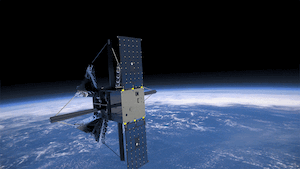NASA to test new solar sail technology with launch in 2022
https://www.space.com/nasa-advanced-solar-sail-launching-in-2022

NASA has recently announced that it plans to demonstrate the use of its new developments in solar sail technology by the summer of 2022. Built through a contract with NanoAvionics, the satellite will use solar sails to “employ the pressure of sunlight for propulsion, eliminating the need for conventional rocket propellant” according to NASA officials. While solar sails have been used in space before, the specific technology demonstrated in this mission is the polymer and carbon fiber composite kite-stick-esque booms that are more heat resistant compared to their metal predecessors. These booms save on mission mass and reduce deployment complexity, unfurling like a tape measure.
Propellant is usually the limiting factor in the lifespan of a satellite, according to NASA. By introducing a suitable, propellant-less system NASA envisions “larger-scale systems that can be used for asteroid searching, monitoring the sun’s activity or powering astronaut communications systems in deep space”. All missions that would benefit the scientific community around the world, but also present interesting cybersecurity challenges.
Although NASA is in the business of sharing information, they don’t necessarily want the average Thrillseeker Joe hacking their deep space satellite just because he can. Solar sails present a new frontier for deep space exploration, and thus require use of the NASA Deep Space Network (DSN). The DSN provides three enormous radio antennas that allow for contact with satellites such as the Parker Solar Probe and New Horizons. In another article from June 2019, NASA confirmed that the DSN was hacked due to an unauthorized Raspberry Pi placed on the network.
Cybersecurity should be one, if not the most, important concerns for NASA at this point. The 2018 Raspberry Pi hack may have influenced some scientific data, but if NASA really is considering deep space human space flight the networks will have to be secure. These threats are not only bad-acting outsiders, but unauthorized or unvigilant insiders as well.